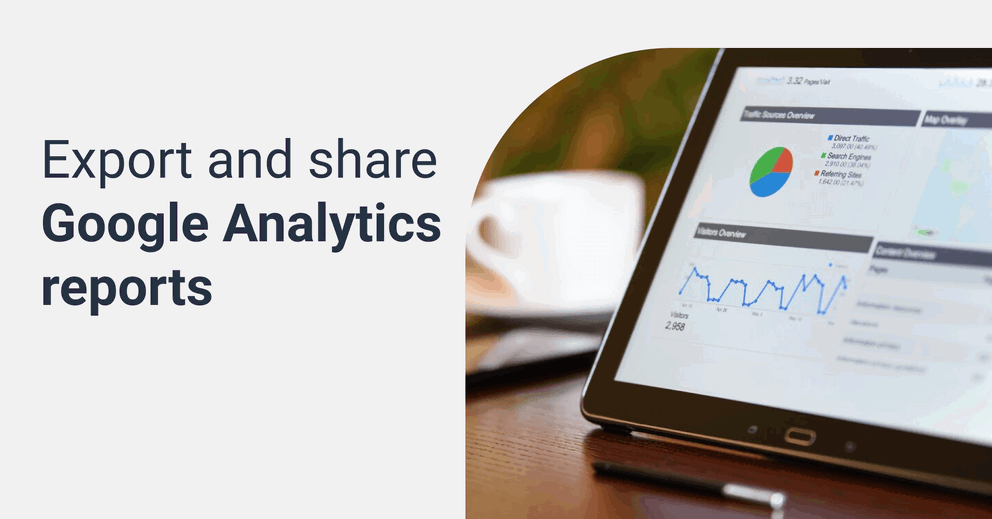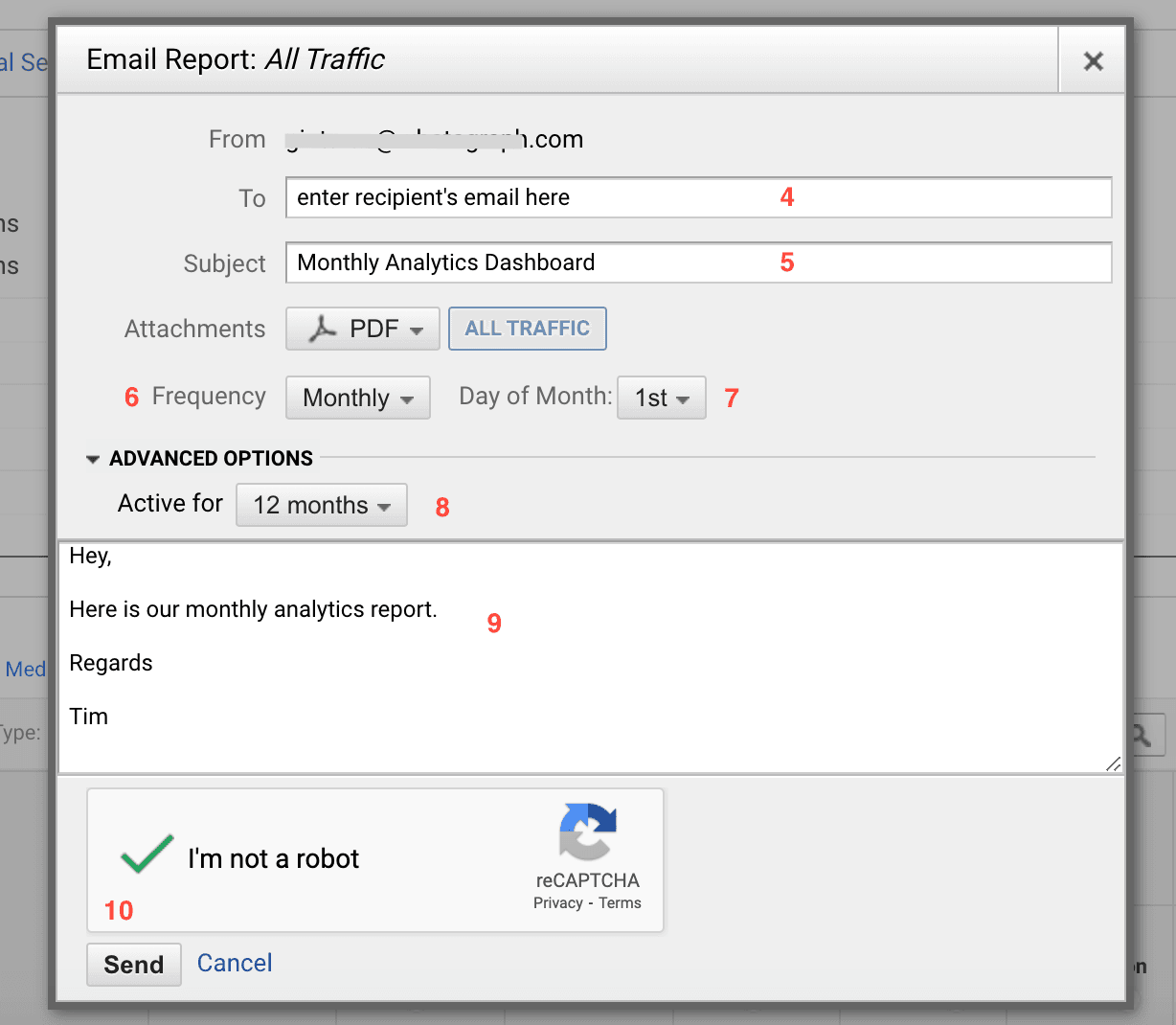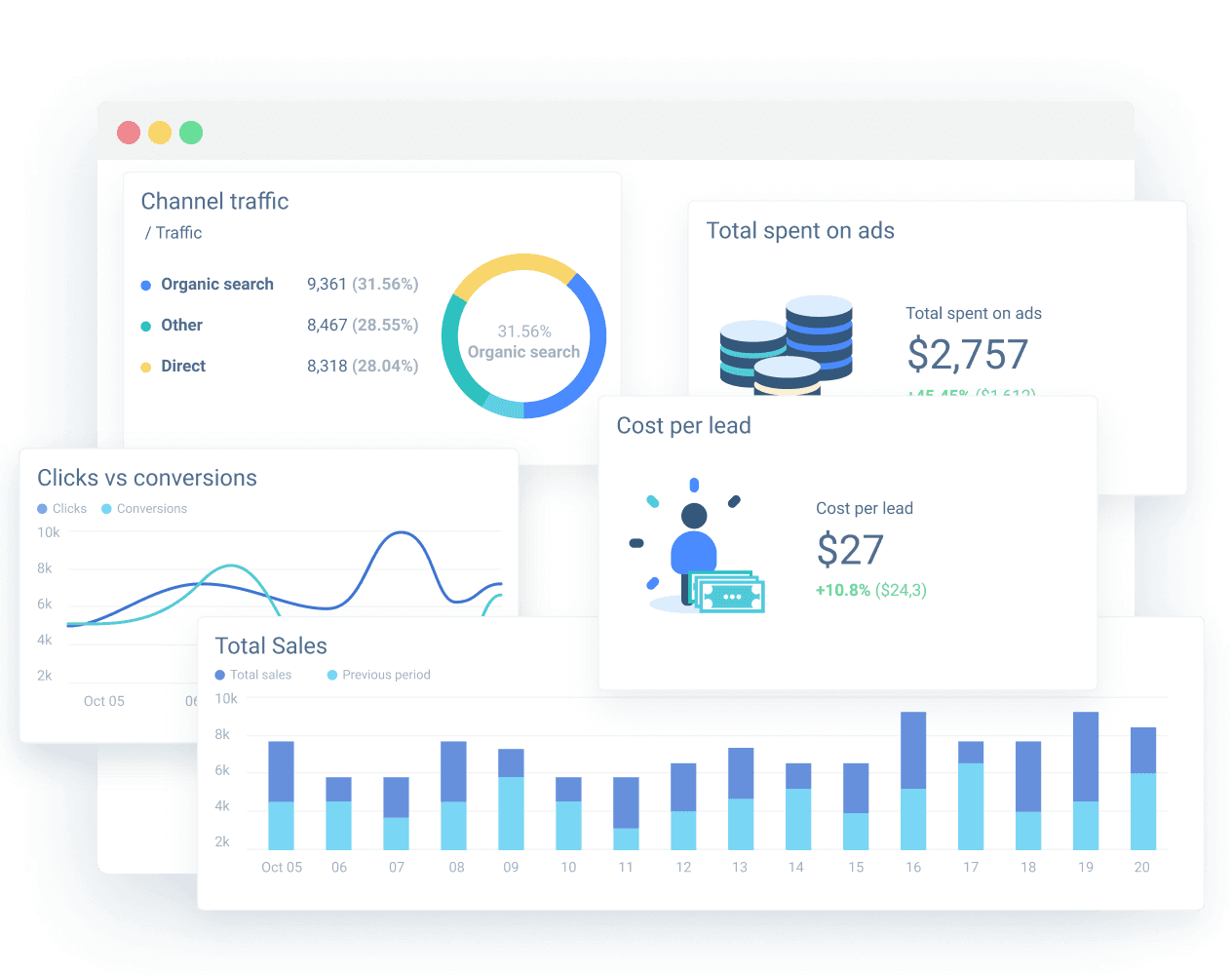Your Guide to Google Analytics Automated Reports
Mindlessly perusing through Google Analytics data to manually build a data report consumes too much time. So, a great go-around for this issue is making sure you have the right tools and systems in place.

Nov 18 2020●4 min read

Automation should be a solution, not a problem. If you're using Google Analytics and want to start automating the reporting process, we'll answer a few key questions. In today's article, you'll learn how to set up and download automated Google Analytics reports. You'll also figure out what are the standard reports in Google Analytics.
What are Google Analytics Automated Reports?
Google Analytics Automated Reports is a Google Analytics feature that allows you to schedule and generate automated reports in real time. Instead of manually extracting data and creating reports every time, you can set reports to automatically pull the latest data at predefined intervals.
How do I get Google Analytics reports?
Before you can start automating or scheduling reports, you'll need need to have the report itself ready.
Here's how to do that:
Go to Google Analytics and click on "Create new report."
This will open the interface of the add-on – this part is pretty easy. Just name your report, choose the Analytics profile you want to use.
In the next step, set the metrics and dimensions you want to see. You'll be able to customize everything you need (e.g., date ranges and filters) in just a bit. In this basic example, choose Sessions in the "Metrics" field. Finally, click on "Create report."
Afterward, click "Run reports" under the "Add-ons" label: the tool will query the Analytics APIs to pull the data you solicited, and a pop-up will tell you if the request was successful. In a new sheet, you'll see the report.
In this instance, you should see the number of sessions registered within the default date range (the last 7 days). You can change this rate if you'd like.
If you want to create a new report while maintaining the current one to compare the numbers, add a new column. The fastest way to do it is to copy and paste the old one, then modify values where needed – the reports will be generated in two separate sheets. This method is much faster than clicking on "Create new report" and using the GUI every time.
Once this is settled, you're ready to start automating reporting on this data.
How do I set up automated reporting in Google Analytics?
Automated reports on GA is a feature not many people know of. But if you implement it, you'll start saving loads of time on report building and analysis. Plus, you won't have to worry about logging on to gather every marketing report's data.
Here's the best part: it takes only a few minutes to set up this automated process. At the same time, these reports can come across as if you went out of your way to do a thorough analysis. It's a win-win situation: you'll save time and impress your clients. Here's how:
 |
 |
- Go to the dashboard that you want to schedule.
- Select a date range using the calendar drop-down in the top right-hand corner.
- Click the Share button below the dashboard title.
- In the To field, enter the email address you want the dashboard sent to. This might be your email or your clients.
- Enter a Subject line for the email.
- Select a Frequency for how often you want the dashboard to be sent.
- You can refine your frequency choice by selecting the day of the week, day of the month, etc.
- Under Advanced Options, you can select the duration you want the reports to be active for. (Maximum duration is 12 months)
- Enter the body of the email in the text box.
- Click the Send button.
And voilà! Your report configuration has been locked in the vault. Based on the settings you picked, Google Analytics will now start sending automated email reports with the selected dashboard attached in PDF.
Just keep in mind, the emails will be sent using the account you use to log into Google Analytics. So, if you've logged in with your 9th-grade email, you may not get any feedback from the receiver.
What are the standard reports in Google Analytics?
Most people have very different needs in reports. Besides, a report will be more valuable if you create it based on the client's specific needs. This is difficult to accomplish if you use Google Analytics – here's where Whatagraph comes into play: using the tool, you can create custom, user-friendly reports. 
But, if you are here exclusively for Google Analytics and looking for some standard reports, here is a quick rundown of what the standard ones are.
Since Google Analytics comes with 78 standard reports, we'll cover the five categories encompassing these 78. These categories include real-time reports, audience reports, traffic source reports, content reports, and conversion reports.
Real-Time Reports
This category has four reports that give you current information about your site's activity, website visitor geographic locations, how they turned up, etc.
Audience Reports
There are 13 reports here that give you insight into the people visiting your website. These reports can be related to languages, location, and whether they are new or returning visitors. You can also drill into the type of devices they are using to access your site.
Traffic Sources Reports
This is the largest category of standard reports – 25 different reports fall under it. They all help uncover the different ways people stumble upon your website. These reports can answer questions like: did they directly type a URL? What keywords did they use? Which landing page showed up based on the keywords they used?
Some of these reports require you to connect your Google Analytics account to your Webmasters Tools account.
Content Reports
The content reports category includes 21 reports, your website's content being the main focus. It covers the specifics such as what's popular on your site and what's not, where people spend their time, and what people click on. And a lot of other web analytics related to your site content.
Conversion Reports
15 reports fall under the conversion category, it being the most difficult section of reports to implement. Each one uniquely requires a form of consulting to activate.
Once activated, you'll get access to detailed analytics of your site. You can start to get a clearer picture of why your site exists in the first place. Are conversions being made, or are you hitting goals for vanity metrics? By setting up goals and sophisticated tracking, you can start impacting your bottom line.
An alternative to Google Analytics
It's no secret that there are loads of steps to setting up automated reports on Google Analytics. And we haven't even really scratched the surface.
The complicated nature of working with this type of technical platform deems it difficult for agencies to implement or effectively present results to their clients.
As mentioned before, if you're looking for a tool to automate reports, Whatagraph is an all-in-one solution that is easy to use and fully customizable.
Since it's likely to happen feel free to use it when you start losing your mind over setting up your Google Analytics 4 reporting tool.

WRITTEN BY
Roberta AukstikalnyteRoberta is a content writer and editor who strives to share industry updates with her readers. Her professional background includes Public Relations and Customer Success.